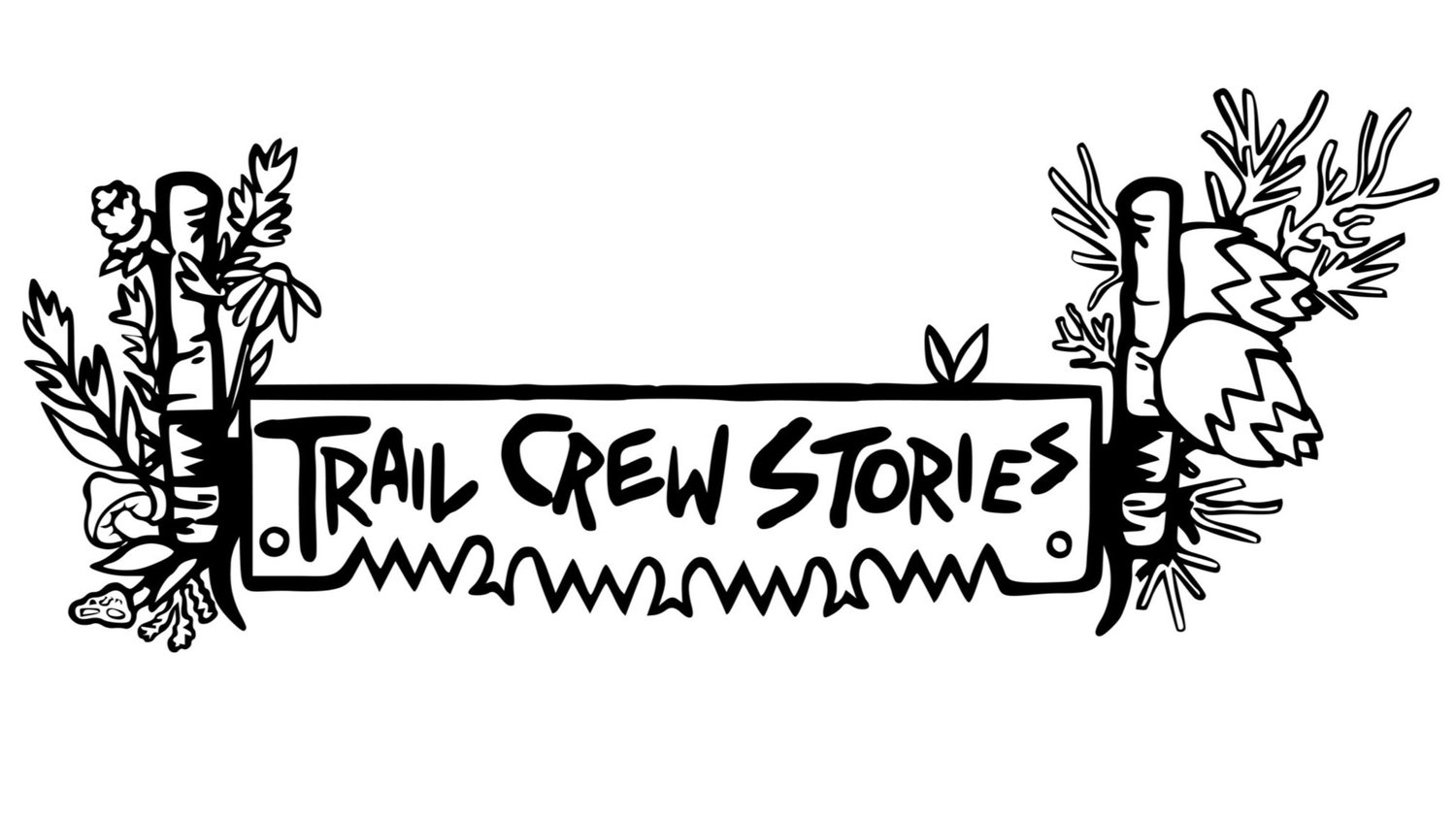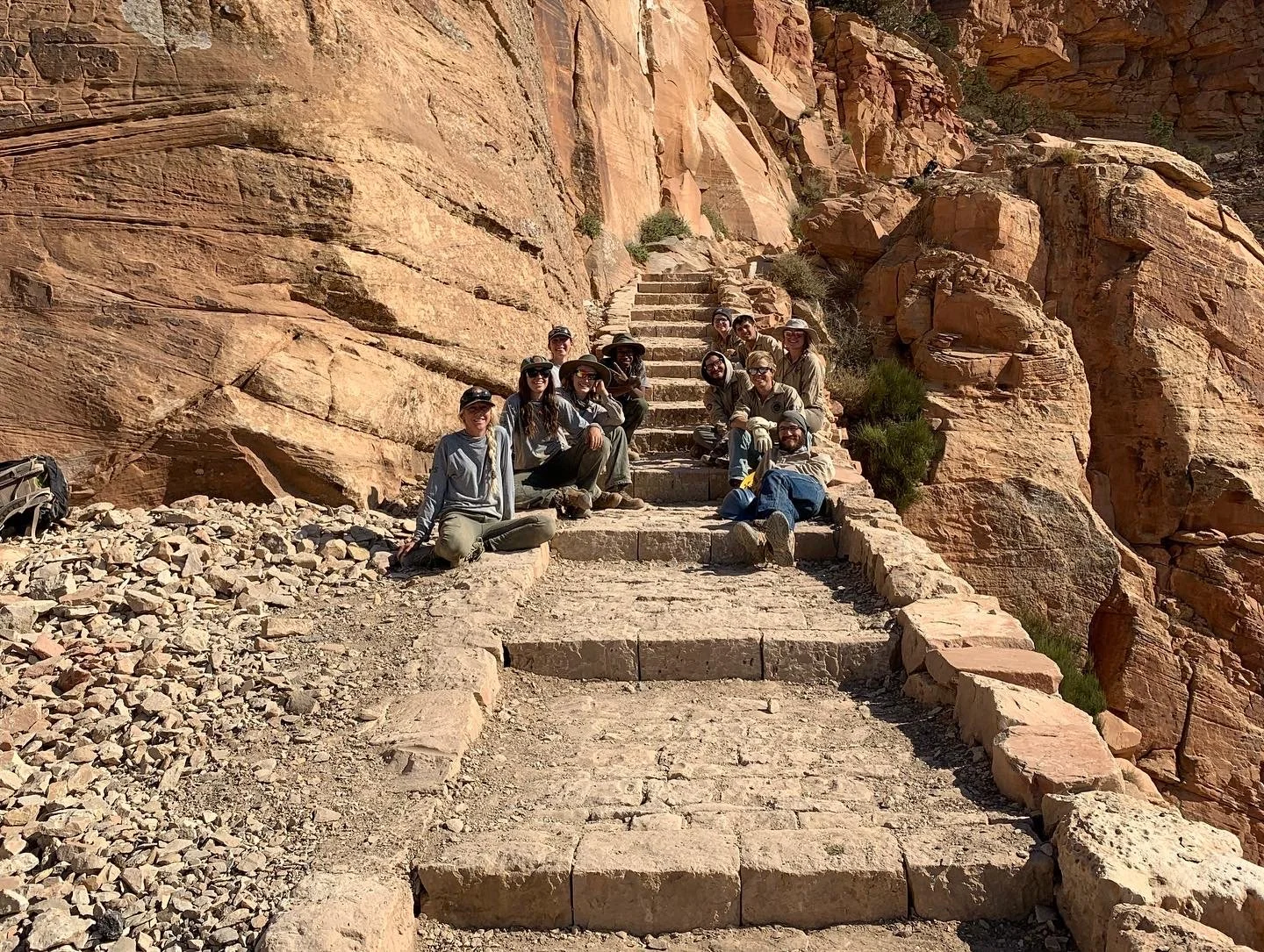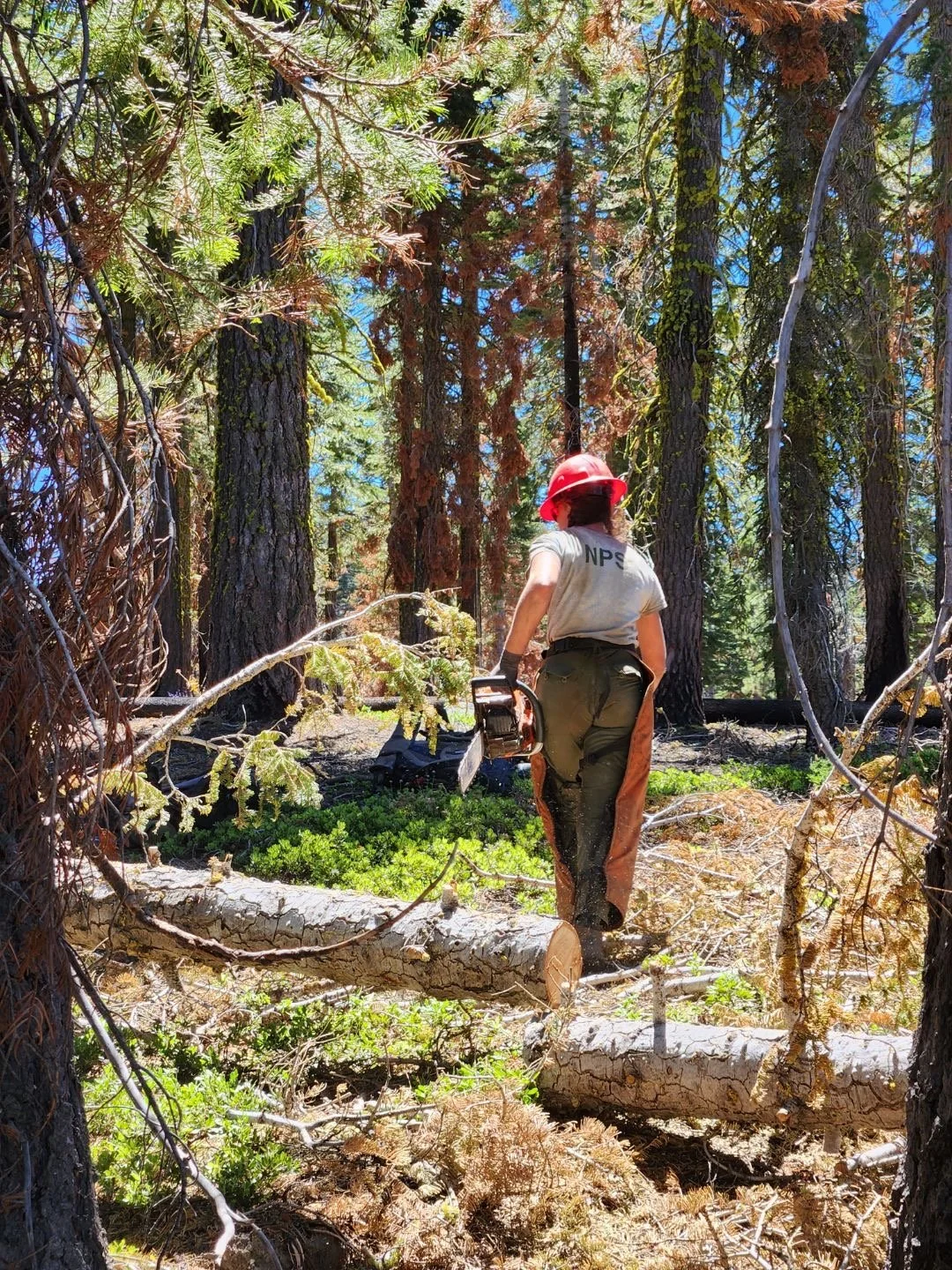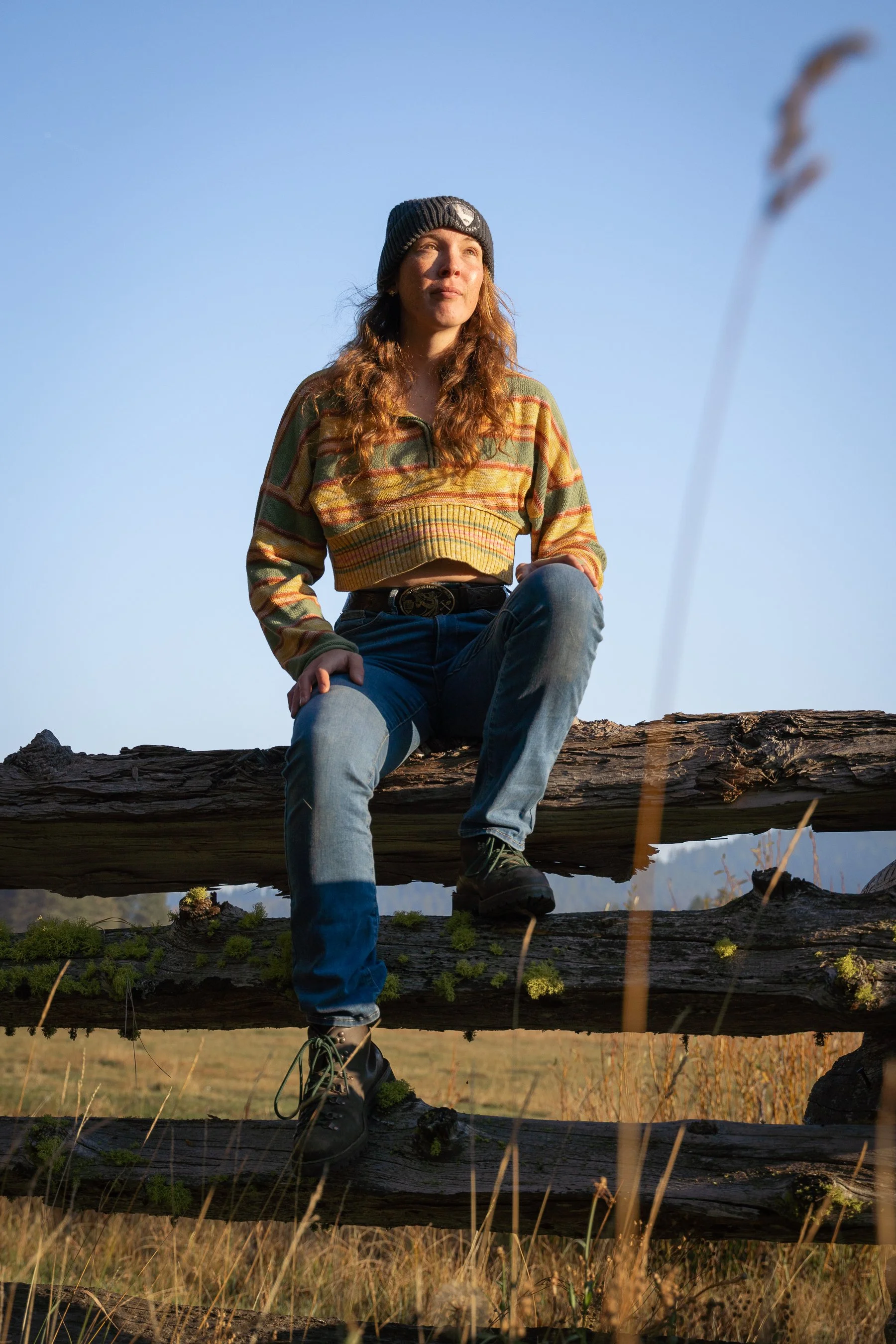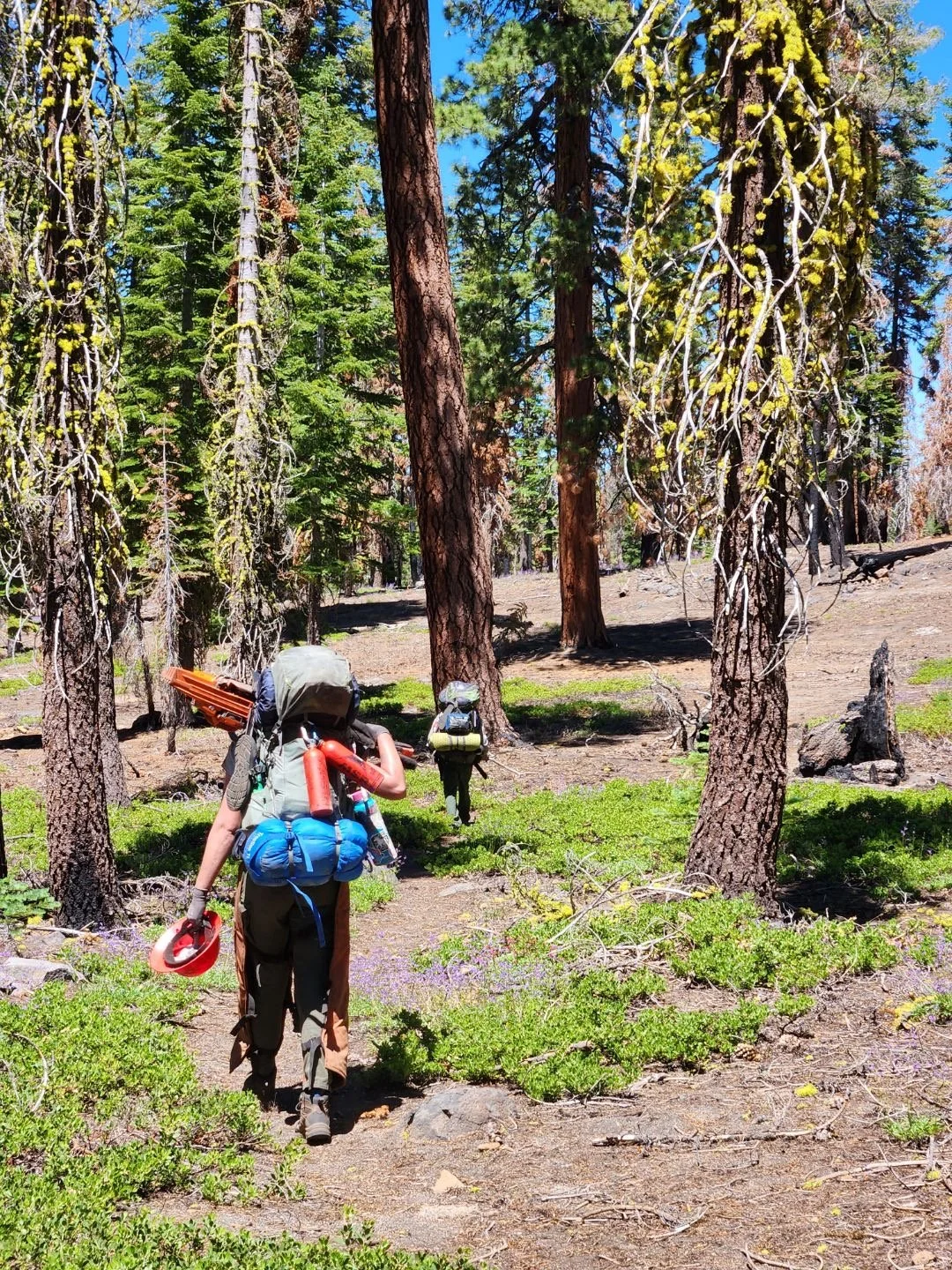Hannah Huscher: Building Back Better
I met Hannah in front of the lodge in Mineral, CA, a tiny town in northern California just outside of Lassen Volcanic National Park. Mineral is tucked in a valley of rolling volcanic peaks, with bucolic valleys nestled between the forests.
I had spent that morning with trails legend and crosscut matriarch Dolly Chapman, and it felt symbolic to round out the day talking to Hannah Huscher, an up-and-comer in the trails world and a member of the Lassen Volcanic National Park trail crew.
Lassen is often overlooked in California, with park-hungry tourists flocking to Yosemite, Joshua Tree, and Sequoia. But the scenery and ecology of Lassen are extraordinary. It’s a land shaped by fire, both from ancient volcanoes and recent wildfires. From July to October 2021, the Dixie Fire burned a total of 963,309 acres, including 73,240 acres within the park boundary. It is the largest single fire in California history.
While destructive, fire also brings renewal. Both Lassen Trail Crew members I interviewed– Hannah Huscher and Tracy McClellan– shared that the Dixie Fire created an opportunity to rebuild, a rare opportunity under the stringent land management paradigm of the National Park Service. The burn scar was a blank canvas where new trails could be designed and built better and more sustainably than they had been historically.
For Hannah, the trail crew in Lassen also offered a period of renewal and optimism, born out of figurative fires more than literal ones.
Hannah Huscher: I started out working in parks and hospitality for concessions. When I moved from Yosemite to the Grand Canyon, I met somebody on the trail crew out there. And he was like, ‘I get paid to hike around and to build hiking trails.’ And I was like, ‘how do I do this?’ So I left hospitality and joined the Arizona Conservation Corps (AZCC).
The first park I worked in with AZCC was Chiricahua National Monument. That was my first taste of true trail work and I fell in love with it. There's just a sense of camaraderie that's unmatched. I've had some pretty horrid experiences working in hotels.
I went from hospitality to this beautiful crew that treated me with respect and kindness. We were in it together. Our season there was pretty rough. We woke up in the morning and it was like 10 degrees. It was negative 16 degrees overnight. We're waking up thinking, ‘this sucks, but we're in it together.’ That's what made me want to stay.
I worked on an AZCC crew out in the Grand Canyon with my best friend, Tora. She's out there right now. Then I got hit by a car. I got backed into by the work vehicle. I got really lucky. My knee got hyperextended, my ACL was sprained but nothing serious, no surgeries needed. So I was out for winter. But during that winter I got contacted by the Grand Canyon trail crew and they were like, ‘Hey, we want to hire you.’
My first season with the Park Service, somebody dropped a rock onto my left foot. I broke three metatarsals. I learned the hard way: no two-man rock carries. Now I use rock nets. But I got flown out of the Grand Canyon via helicopter, and that was really cool.
I worked in Grand Canyon for a couple of seasons and I felt that I had gained everything that I could from there.
So I decided to come up here [to Lassen] because I wanted to learn more about wood and chainsaws and timber. This place is a little bit of everything. So it's been perfect. I love it here.
Staircase built by the Grand Canyon Trail Crew and AZCC at Ooh Aah Point.
Photo courtesy of Hannah Huscher
JG: I’m assuming Grand Canyon is mostly rock work?
HH: The crew lead I had at the time was very particular and we were chiseling and shaping rock to be perfectly rectangular, to the point that she had an angle grinder and she ground down the side to show us how flat she wanted it. My first season I didn't quite understand, because coming from the conservation corps we didn't do very much rock shaping.
When I got out to Grand Canyon, she handed me a carpenter’s square and said, ‘square the rock.’ I had no idea what she was talking about.
JG: You're using a carpenter's square to square the edges of a rock?
HH: Yeah, I did not understand for a while. I have ADHD and autism, so it takes me just a little bit longer to understand things fully. So it took me a little bit, but once I got it, I felt super comfortable with it. And by the next season, she said it was perfect.
It felt so good to go from like, ‘this is wrong, this is wrong, this is wrong,’ to ‘perfect.’
Hannah shapes a rock in Grand Canyon National Park.
Photo by Laura Moore
JG: How would you compare working at Grand Canyon to Lassen?
HH: It was weird transitioning from Grand Canyon, where we were on the same project for six months at a time, to Lassen, where we have a bunch of different projects and we only have two weeks for each of them.
At Lassen, we have to be reasonable with our expectations. Which is nice. I feel like it's also allowed for a lot more experience in different areas and situations.
In Grand Canyon, you're not having to figure out as much because you spend all season building one structure. You can't change it. Whereas at Lassen, with the burn area, we've completely changed the trail at Mill Creek because it was just completely gone from the fire.
That’s been really cool, to leave a stamp like that. The trail looks this way now because we changed this from what it was originally.
Hannah chainsawing in Lassen Volcanic National Park.
Photo by Connor Clifford
JG: What's your proudest accomplishment in your career thus far?
HH: Squaring the rock. That felt really good. But I wouldn't say it was for the right reasons.
I'm not gonna lie, my seasons at the Canyon were not nice to me. Here, I feel like I'm finally getting the recognition that I wasn't afforded when I was working at the Canyon.
That just feels good. It’s been a long road to get to this point where I feel appreciated and cared about. The crew here has great camaraderie. Everyone here really cares about this place.
There’s quite a few other people that just return continuously, all because they genuinely love this land.
JG: Do you see this as a long-term career?
HH: I know right now that I want to be a crew lead. I'm working on getting there. I know that there's still a lot that I should learn and need to learn But that part excites me that there's always something to be learned, and somebody's gonna know a better way to do something. That information is gonna be passed along and you know it’s gonna help other people grow in their career as well.
Photo by of Connor Clifford
JG: What would you like to see in the trails community going forward?
HH: I want every park, camaraderie-wise, to be like this one. I want people to feel comfortable amongst their co-workers, and that if they don't know something, it's okay. I just want people to feel safe in their workplace, both mentally and physically. I think the mental aspect is a lot more important than people realize.
This job is hard enough as it is. To have environments that people feel they can't succeed in doing this hard of a job, it's not realistic. That’s going to burn people out. That's how we lose trail crew members. That’s why they leave and go do other jobs. Our community gets smaller, and the workload is more.
Hannah quarries a rock for rockwork in Lassen Volcanic National Park.
Photo by Jon Ruttger
JG: What has been your most adventurous project in your trails career?
HH: Honestly, the one we did yesterday. Mill Creek Falls. We had giant gluelams that completely got burned out. We had to helicopter in new ones, but we also had to place them perfectly within the brackets of the bridge abutments.
Gluelams are timbers constructed from laminating several pieces of wood together, side by side.
They had guylines tied to them. We had to go in and grab them and pull this huge plank of wood over to these brackets and then just slam them in. Each of them weighed between seven hundred to a thousand pounds. It was intense, but it was worth it. The whole season we were worried about it. But they're there. They're in the brackets. They're ready to have deck boards put on them.
It was crazy because the helicopter we were using was a retired Black Hawk. So just being under the rotor wash was like having an air conditioner just go full blast on you. It was 30 degrees outside. That's pretty intense.
JG: Any other thoughts or comments for the record?
HH: As long as you're doing your best, that's what matters. Don't let anyone else tell you otherwise.
